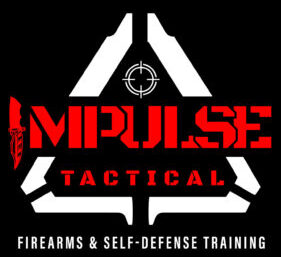You can “fight”, but can you “defend” yourself?
What is the difference between Self-Defense and Fighting? To answer this question, it’s important to consider what self-defense and fighting actually are and not what many people think they are. Many would have you believe they are one in the same and that a “good” fighter can defend themselves effectively, properly, and legally. These myths could not be further from the truth. We will also cover how they correlate with the martial arts as well as why the martial arts are not always the answer.
Round 1: Fight!
Fighting is simply voluntary participation in a physical altercation. “It takes two to tango” as they say. This could be as innocent as playful wrestling or grappling with a friend, competing in a Brazilian Jiu-Jitsu match, standing up and challenging a bully, engaging a robber or mugger, or scrapping with the guy at the bar who looked at you wrong, called you names, or insulted your spouse. These are all avoidable interactions.
Does it being “avoidable” mean you shouldn’t stand-up for yourself, protect others, or handle bullies? Of course not… there is nothing wrong with fighting for the proper reasons you find just. Fighting means a person is making a distinct decision to intervene and engage in physical conflict. The moral or ethical reasons for fighting are irrelevant to what fighting means. Whenever we CAN avoid a fight and do not, we are CHOOSING to fight. This is the main difference between self-defense and fighting.
As with everything else, knowing how to fight comes with plenty of pros and cons. Some pros include teaching a bully a valuable lesson, winning, learning how to handle yourself (competition), protecting a loved one, surviving the “streets” with regular challenges, etc. But will “knowing how to fight” prepare you for a self-defense scenario? Let’s look at the cons on fighting… but remember, it’s important to know that most people will not voluntarily fight if they do not expect to win. This idea may suggest they have an advantage over you which could be a weapon, friends of standby, or just more skill.
Cons to fighting include life-threatening or debilitating injuries, the opponent could be a better overall fighter, weapons involvement, multiple opponents, legal issues including prison, fines, or lawsuits, and of course death. Are any one of these cons worth jumping into a fight?
Here is an article about an MMA fighter stabbed during an altercation. Or when an experienced BJJ practitioner and coach trying to spoil a robbery. Another BJJ Black Belt loses his life in a road rage incident. BJJ doesn’t help one unfortunate soul because a gun came into the picture during a street fight. A college wrestler lost his life due to gun violence. Even in Russia, great wrestlers brawl and die doing what they know very well but forget about the “real”. And let’s not forget about the knock-out game that was plaguing the communities of NJ and NY for many months. You can’t block a sucker-punch to the back of the head… Individuals can have “fighting experience” yet lose the battle of self-defense.
Food for thought…
Johnny fought a guy at the grocery store who bumped into him and dropped explicit profanity his direction yesterday. Johnny “won” that fight by breaking his arm and knocking him unconscious. But this was after the other guy got a clean sucker-punch. Johnny’s mouth is wired shut for 6-months and serving 2-5 years for aggravated assault and battery. His wife is struggling with the bills and childcare and considers divorce. But Johnny’s honor is intact. Johnny is proud. Johnny stood his ground!
Was Johnny right or wrong? That is a matter of personal opinion… it depends on the situation and mental state at that time. What does matter is the long-term. Was it worth it? Johnny could’ve been home right now with his wife and children eating ice cream if he had just walked away.
What’s different about Self-Defense?
So now, what is self-defense? In one word… SURVIVAL. Self-defense is the “unavoidable” situation which requires you to act in order to protect yourself. It involves the use of P.E.T., prevention, escape, and tactics.
Self-defense often involves the use of tactics as a tactical response to the situation, but only when an attacker forces their hand and is often a reactionary response. Fighting experience will come in handy to the tactical portion of a self-defense scenario. The goal is to escape.
The striking and other tactics you use during self-defense are performed because you must, not because you choose.
Some examples of “self-defense” include kidnapping, rape. multiple attackers, knock-out game, workplace or public shooting, someone attacking you although you’ve tried to resolve the situation peacefully, being chased by a dog, an individual with a knife randomly picking fights, murderous home-invasion, road-rager pulling you out of the car, a jealous boy or girlfriend grabs you, etc. We are talking about dangerous situations that are not typically ones in which people just “walk away”.
When we are “fighting”, we usually have time to assess the fighting style, movements, aggressiveness, and to strategize your win. Self-defense does not usually allow you this “time”. If this time exists, use it to run away… otherwise, you may end up like Johnny.
It’s very important to take into account the legal aspects of self-defense. Always educated yourself and be prepared from a legal aspect to make better and more intelligent decisions. One place to start is www.findlaw.com. DO your best to avoid the “Fight after the fight”.
Martial Arts and it’s role in fighting and self-defense…
How is fighting and self-defense related to the martial arts? Fighting and self-defense can be learned many ways. It could be the hard way through experience such as street fights, a family member or friend, or it could be through martial arts classes such as BJJ, Kempo Karate, Jujutsu, Judo, Boxing, Muay Thai, MMA, Krav Maga, Aikido, and even the Samurai Sword and other weapons training.
But can a martial artist defend themselves? Well, what if a boxer or karate practitioner is taken down to the ground without “ground-game”? What if a BJJ blackbelt is sucker-punched or a knife is involved? Can a Muay Thai fighter stop a bullet? Often, the martial arts will specialize in a specific subset of skills like striking or grappling. Because of this, they will naturally exclude aspects of self-defense that may be crucial. Every art will be better if they regularly consider striking, grappling, and throwing during instruction. There are also weapons such as guns and knives to consider. They are real and everywhere. You must be very specific with training with a against these weapons.
Self-defense is not fighting; it is not a competition. However, the skills these practitioners have developed over years of training can definitely save their lives… in the right situation. The best way to learn fighting or self-defense is through dedicated, legitimate self-defense courses, or by learning martial arts to acquire skills in striking, grappling, weaponry, & throwing.
I’m a blackbelt, can I defend myself?
The average student will need many years of training in any one martial art to learn self-defense techniques or fighting. Also, many schools or dojos will focus on either fighting or self-defense. Fighting “well” takes skill and strategy while self-defense is more explosive, reactionary, and straight to the point.
In BJJ, for example, a blue belt is about what an average person will need to defend themselves in a (weapons-free) 1v1 grappling situation and takes 1-3 years to achieve. However, Krav Maga is mostly self-defense oriented, so you could potentially learn “practical self-defense” in a shorter time-period. But fighting takes, quite simply, years and years of practice, determination, and dedication to become proficient. We are talking about technical mastery, speed, strength, stamina, and endurance training.
In short, self-defense methods involve Prevention and Physical Tactical Response. There are plenty of resources on how to prevent scenarios from happening. Tactical Response, however, is engraining specific movements and tactics into muscle memory and the subconscious so they can be utilized quickly and effectively under stress. With commitment, you could learn self-defense physical tactics within a very short time frame. Examples could be learning fundamentals of escaping grabs, where and how hard to hit, improvised weapons, etc.
Since the martial arts are typically taken up as a hobby, form of exercise, or to compete, and involve hundreds of techniques and movements, it can take much more time to engrain the principles needed for self-defense.

